Outdoor furniture brings comfort, style, and functionality to your garden, patio, or deck. Whether it’s used for weekend barbecues, lazy afternoons in the sun, or entertaining guests under the stars, your patio furniture plays a key role in your outdoor lifestyle. But with the ever-changing UK weather, protecting it becomes essential.
That leads us to a question many homeowners ask: What’s the best way to protect outdoor furniture—covers or storage? In this blog, we’ll compare covers vs. storage for patio furniture, weigh the pros and cons, and help you choose the right solution based on your space, furniture type, and climate.
Why Protecting Outdoor Furniture Matters
Outdoor furniture is constantly exposed to environmental stress—rain, UV rays, wind, frost, pollen, and even bird droppings. Over time, this exposure can cause significant damage, such as:
- Rusting or corrosion on metal components
- Fading and brittleness in plastic or fabric
- Wood rot or warping in timber furniture
- Mildew and mold growth in cushions and soft furnishings
That’s why durable outdoor furniture protection is essential if you want your pieces to last for years without looking worn out or unusable.
Option 1: Outdoor Furniture Covers
The Pros of Furniture Covers
Using covers is one of the most popular and accessible ways to protect your garden furniture.
- Year-Round Convenience: High-quality waterproof outdoor furniture covers (UK) designed for year-round use can be quickly put on or removed, making them a flexible option for day-to-day protection.
- Budget-Friendly: Compared to building a shed or clearing out storage space, covers are a low-cost option that doesn’t require major changes or effort.
- Custom Fit Options: When you’re choosing the your garden furniture covers, look for options tailored to your specific table, chairs, loungers, or sofa set for maximum coverage and minimal fuss.
- UV and Rain Protection: Many covers are designed to resist UV rays, repel water, and block dirt, keeping your furniture looking fresh and clean.
- Breathable Materials: Some premium covers, such as BBQ covers and outdoor furniture covers, feature ventilation flaps or are made from breathable fabrics to help prevent condensation and mildew buildup underneath.

The Cons of Furniture Covers
Despite their many benefits, covers are not without drawbacks.
- Moisture Trapping: Cheap or poorly fitted covers can trap moisture underneath, leading to mold, mildew, and unpleasant smells.
- Wind Damage: In gusty conditions, loose covers can blow off or flap around, potentially causing scratches or becoming lost.
- Durability: Over time, covers can wear out or tear, especially if they’re constantly exposed to harsh sunlight or heavy rain.
Option 2: Storing Outdoor Furniture
The Benefits of Storage
When it comes to winter storage solutions for garden furniture, moving it indoors or under cover can be a smart seasonal strategy.
- Complete Weather Protection: Storing your furniture in a shed, garage, or dry basement ensures it’s completely safe from rain, frost, wind, and UV damage.
- Extended Lifespan: Furniture that’s sheltered for several months of the year generally lasts longer and requires less maintenance.
- Less Cleaning: When kept indoors, your furniture won’t collect leaves, dust, or debris—cutting down on cleanup time.
- Pest Protection: Storage keeps your cushions and soft furnishings safe from rodents and insects that might otherwise nest in them.
Downsides of Storage
However, not every household has space for storage or the ability to move heavy furniture.
- Space Requirements: Storing full sets of patio furniture requires significant room. If you don’t have a shed, garage, or other dry storage space, this option may not be feasible.
- Effort Involved: Larger or heavier furniture can be difficult to move and may require disassembly before storing.
- Limited Access: Once furniture is stored for the season, it’s out of use—so if there’s a surprise sunny weekend in winter, you may not want to haul it back out.
Covers vs. Storage: What’s Right for You?
There’s no one-size-fits-all answer when it comes to covers vs storage for patio furniture. The right choice depends on your climate, storage space, and lifestyle.
Use Covers If:
- You want easy, daily protection
- You use your patio furniture frequently, even in cooler months
- You live in a mild or moderate climate
- You’re looking for an affordable and convenient option
Opt for Storage If:
- You live in an area with harsh winters or frequent heavy rainfall
- You don’t plan to use the furniture for several months
- You own high-end wooden or upholstered furniture
- You have the space and ability to store your items securely
Combine Both for Maximum Protection
Opt for a hybrid approach is perhaps the best way to protect your outdoor furniture. During the warmer months, use high-quality covers to shield your furniture from daily exposure to sun, rain, dust, and bird droppings. During winters, move larger or more delicate items into indoor storage to prevent weather-related damage. This method offers the best of both worlds—daily convenience and seasonal preservation.
For example, using durable patio table covers throughout the spring and summer can significantly extend the life of your outdoor dining setup, while storing cushions or more vulnerable pieces over winter helps maintain their appearance and function for years to come.
Choosing the Right Garden Furniture Cover
If you decide to go the cover route, here are some key features to look for:
- Waterproof and UV-Resistant Material: To handle unpredictable British weather, always go for sturdy UV-resistant and waterproof sofa covers and chair covers.
- Secure Fastenings: Look for accessories such as elastic hems, buckles, or drawstrings to keep the cover in place during high winds.
- Breathability: Choose breathable fabric to reduce the risk of mold or mildew developing underneath.
- Custom Fit: Opt for custom-made covers for outdoor furniture that match the size and shape of your furniture for better protection.
Conclusion
So, what’s the best way to protect outdoor furniture—covers or storage? Ultimately, the answer lies in your personal needs and circumstances. If you want year-round convenience, well-fitted covers are a solid choice. If you’re bracing for a harsh winter or want to ensure your premium set lasts for years, secure indoor storage is ideal. And for those who want the best of both worlds, combining both methods offers the most robust protection.
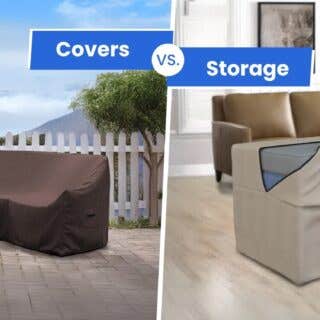






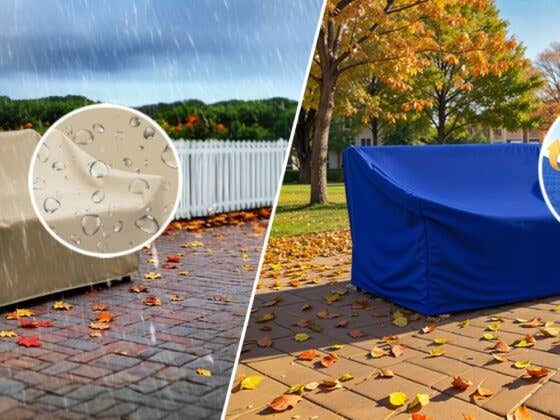
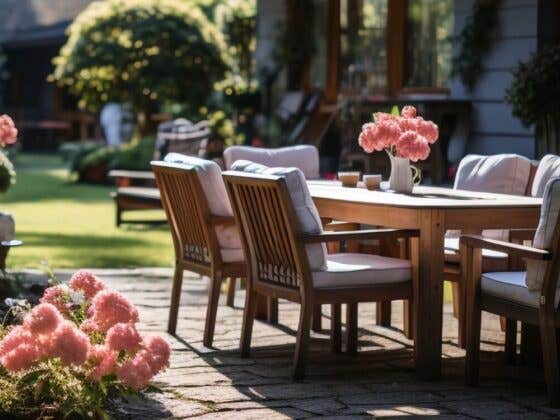
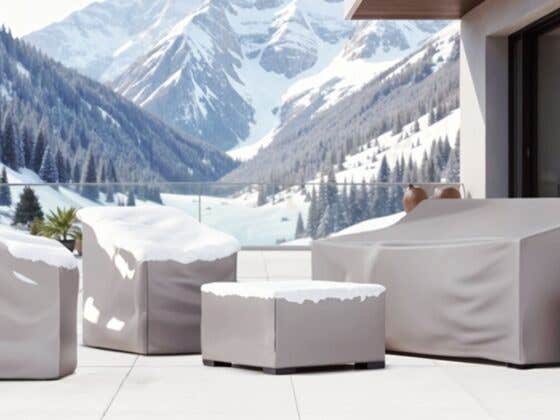


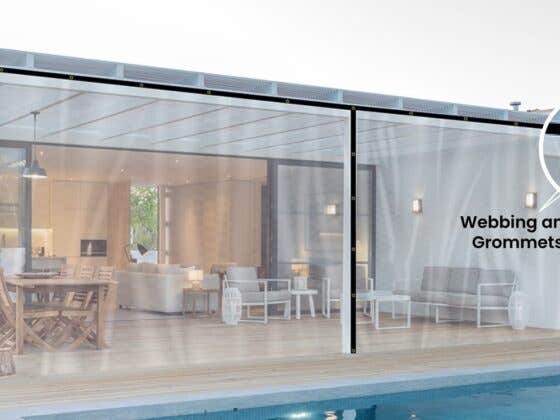

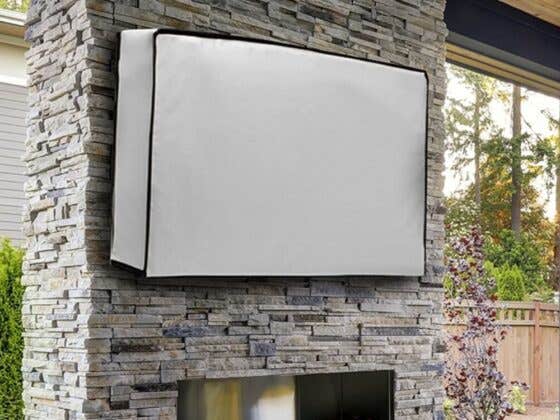
Recent Comments